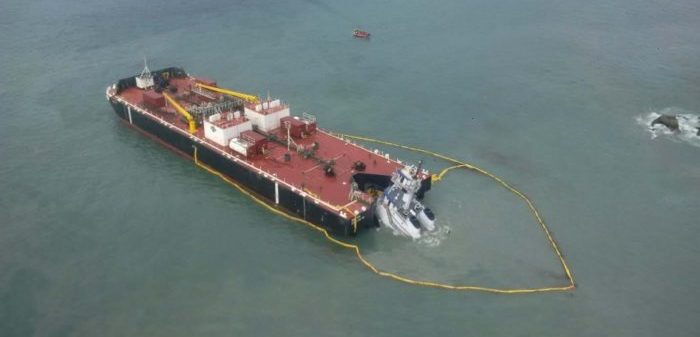In October 2016, the articulated tug and barge (ATB) Nathan E Stewart/DBL 55 ran aground on Edge Reef off Athlone Island, British Columbia, Canada, causing no injuries but a significant environmental damage, as 29,000 gallons of oil were released. Damage to the vessel and barge was estimated at $12 million. The NTSB issued an investigation report on the accident.
Probable Cause NTSB determines that the probable cause of the grounding of the articulated tug and barge Nathan E Stewart/DBL 55 was the second mate falling asleep while on watch. Contributing to the grounding was the ineffective implementation of the company’s SMS procedures for watchstanding. According to NTSB, safety management systems are intended to mitigate the risk associated with vessel operation, but the procedures and processes outlined in each system must be successfully implemented and applied by all crewmembers. It is the company’s overall responsibility to ensure that the system is implemented and maintained at all levels of the organization. On board the vessel, the captain is responsible for motivating the crew to comply with the provisions of the SMS and, ultimately, for ensuring that the procedures and processes are followed. Kirby’s SMS had written procedures that required an additional watchstander in the wheelhouse with the licensed deck officer while the vessel was operating in pilotage waters. Based on the statements of the crew as well as the lack of documentation in the vessel’s logbook or elsewhere regarding the performance of the safety rounds (which would have documented that someone was leaving and returning to the wheelhouse), there is no evidence to support the conclusion that this SMS procedure was implemented on board the Nathan E Stewart. Although the company’s SMS addressed the identified risks associated with the potential incapacitation of the navigating officer, those procedures were not adhered to by the captain and crew on board. The second mate stated that at the time of the accident he was not taking any prescription medications and had only brought on board a bottle of ibuprofen in case he experienced any back pain or a headache. He claimed that he had never been diagnosed with any sleep-related disorders and felt that he had “adequate” rest during the 3 days preceding the accident. He said that on the underway watch rotation he would normally sleep from the time he completed his early morning watch at 0400 until 1115, and then again for a second period of rest around 1900 before awakening to assume the 2400–0400 watch. Although the second mate was aware of the ECS’s cross-track error alarm function, he was not using that navigation tool on the night of the accident. According to the second mate, it was normal practice for the navigation team to not utilize that tool. Had it been utilized, the ECS would have entered into an alarm mode after the second mate missed the port course change required near Ivory Island at 0053. Based on time, speed, and distance calculations, the alarm would have activated at approximately 0055 and thereby provided ample time for the second mate to take corrective action to return the Nathan E Stewart to the intended track. The second mate had fallen asleep sometime after 0024, based on the last-known control input near Salal Island. When investigators asked him why he missed the course change at Ivory Island, he stated simply that he had fallen asleep. It is unknown whether the frequent variation between the two watch-rotation schedules, or other factors that could have impacted his circadian rhythm, influenced his sleep/wake cycles. It is known, however, that the second mate had awakened and relieved the captain earlier than usual and lost an hour of sleep during his second rest period. Explore more in the following report:































































